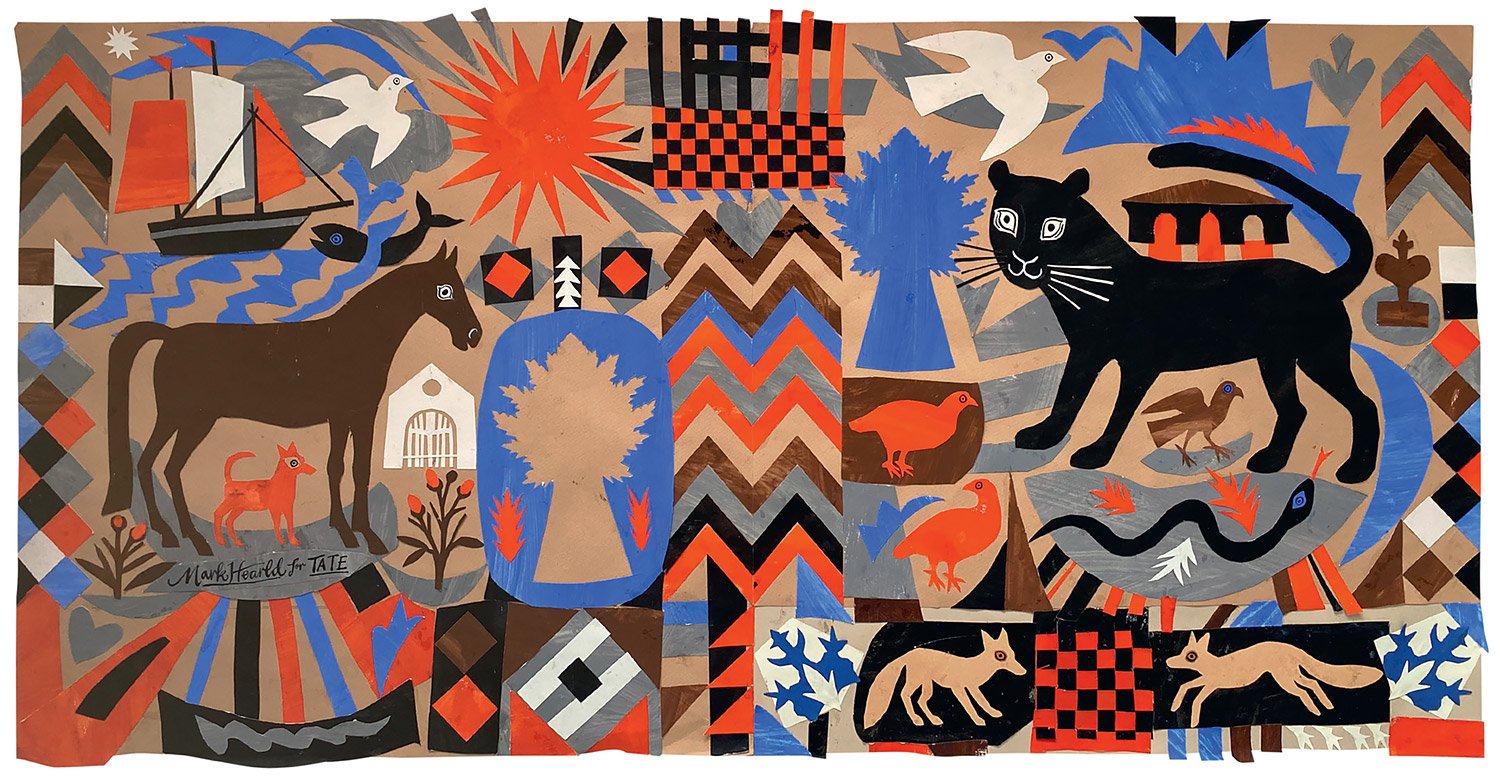Our recent publication, Mark Hearld’s Raucous Invention - The Joy of Making, includes a chapter looking at Mark’s approach to collage making. Find out more about the book and the forthcoming third edition.
On Making a Collage
by Mark Hearld
Collages can begin in many different ways; there’s no one way to create. There are no rules, and that’s the rule. Sometimes a collage is almost fully formed before I get into the studio. That often happens when I’ve seen something particular, such as when I’ve driven round a corner at dusk and seen a roebuck in the road, bounding into the shadow. Then I’ve got an image in my head and it’s a case of interpreting that with the materials in front of me. But I make work five or six days a week, so I don’t always have a fully formed idea. At art school, the idea is put on a pedestal in such a way that if somebody feels they haven’t got one they’re paralysed. However, I think it’s important to find the idea in the making and the doing.
“Collages can begin in many different ways; there’s no one way to create. There are no rules, and that’s the rule.”
It’s a case of going into the studio and finding a beginning. That might be a connection you notice between a beautiful piece of violet paper and a piece of mustard-yellow paper, and something about the way they combine gives you an idea, or you cut a shape from one of them and place it down, and then the collage begins like that. At other times I might simply take a brush with a neutral ground colour, perhaps buff titanium, and banish the whiteness on a sheet of watercolour paper to create an arena to populate. And then I might choose an animal at random, cut a sharp silhouette, drop it into the arena and respond to that. Sometimes I make a series of gestural marks; I put on a bit of baroque trumpet or other energetic music, and just make fluid, open marks that add another dimension, an abstract starting point, and see what those marks offer up, and go on and on, one stage at a time.
But sometimes you can do all those things and nothing quite connects. It’s a little bit like the first ungainly moves on the dance floor, when you hear the beat and step out, but nothing feels quite right – you’ve got to suspend disbelief and keep going, find your groove. That’s very much like making an image, because until the marks and the gestures begin to connect, they all seem unrelated, gauche, inarticulate, unless you’re lucky and you suddenly find that same groove from the outset. But more often than not, you have to push through a swathe of marks or cut-paper shapes that don’t connect. Then you must go through the pain barrier of getting all the disparate elements to sing. That can be really difficult; it can take a long time before anything seems to connect. Where people go wrong – if you can go wrong with collage – is they make collages in which all the things are shouting, but they’re not connecting or communicating. The skill of making a good collage lies in uniting the disparate bits, the pieces that somehow begin to talk to one another.
Painter/printmaker Mark Hearld designs a range of fabrics and wallpapers for St. Jude's - all produced in the UK.
Born in 1974, Mark studied illustration at Glasgow College of Art and then completed an MA in Natural History Illustration at the Royal College of Art.
Taking his inspiration from the flora and fauna of the British countryside, Mark works across a number of mediums, producing limited edition lithographic and linocut prints, unique paintings, collages and hand-painted ceramics. We share Mark’s admiration for artist/designers such as Bawden, Piper, Nash – artists well regarded for their forays into the world of commercial design.






